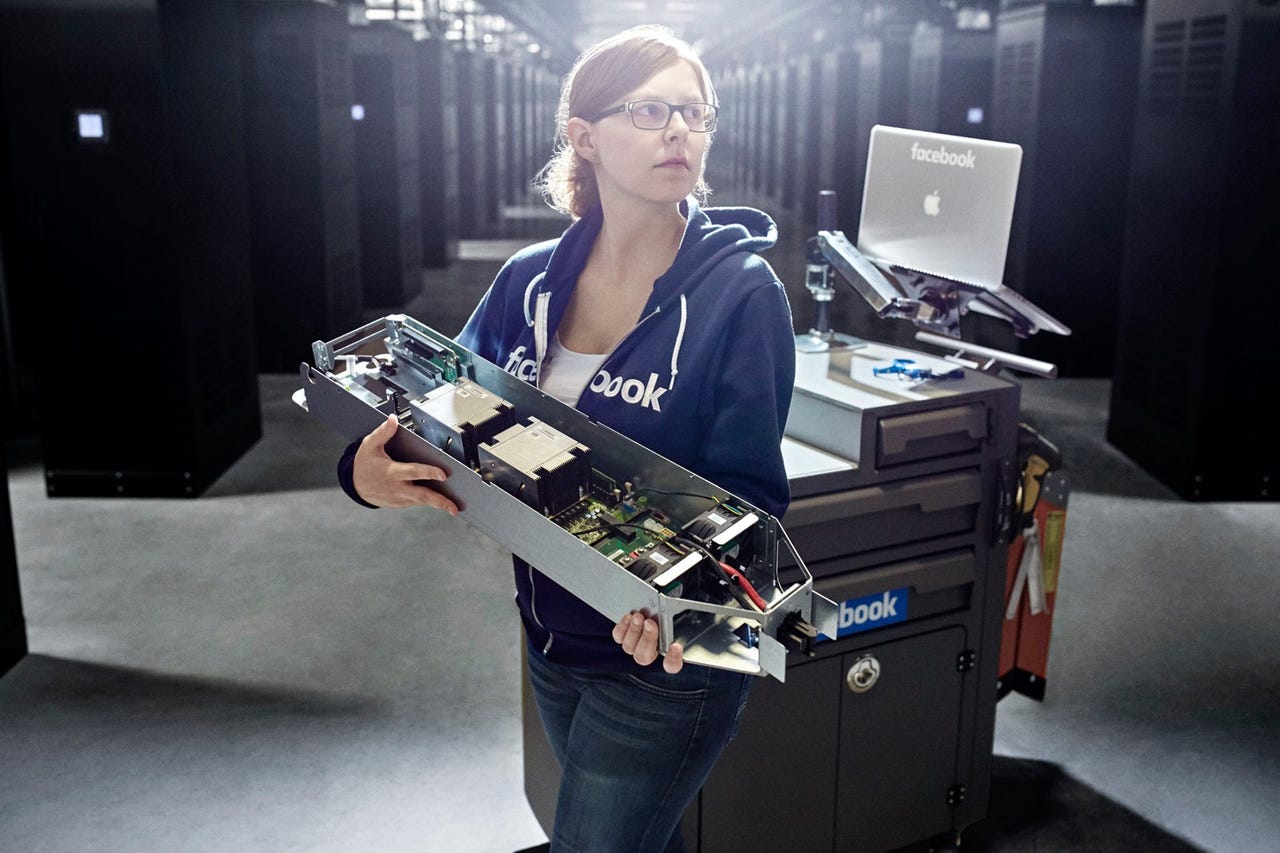Photos: Zuckerberg offers glimpse inside Facebook's cavernous Arctic datacenter

Massive facility
Facebook's main Arctic datacenter is so big that engineers move around it on scooters. Besides the cold climate, Facebook chose Sweden's Luleå because it had plenty of vacant space to support a massive facility, which measures 300m long by 100m wide -- or about the size of 7.5 football fields.
Luleå became Facebook's first European datacenter when it opened in 2013. A second hall announced in 2014 became the first to use the Open Compute Project's 'rapid deployment' design, allowing trucks to carry in pre-assembled chassis.
Hydro-electric energy
Besides the cool air offered by this Arctic-hugging town, with winter temperatures regularly down to about -30C (-22F), Facebook was also attracted by the abundance of locally produced hydro-electric energy to power its servers.
Empty datacenters
As the TV series Silicon Valley highlighted, vast and empty datacenters can be a terrifying place for humans.
Although about 150 people work at Luleå, the data halls are frequently deserted. Because of the datacenter's simplified design, Facebook says it needs only one technician for every 25,000 servers.
Simplified equipment
Yes, Facebook uses Luleå's air to cool the datacenter, but in summer outside temperatures can still reach 20C, so it needs a design that keeps equipment as cool as possible and easy to repair.
Facebook says it has reduced the equipment to its basics so it runs cooler.
"A few years ago, it took an hour to repair a server hard drive. At Luleå, that's down to two minutes," the company adds.
Cooling fans
These are some of the fans Facebook uses to suck in that air to cool tens of thousands of servers. According to Facebook CEO Mark Zuckerberg, in the depth of winter, they're used to draw heat from the servers to warm the buildings.
Data destruction
This image suggests Facebook is carrying out its data destruction thoroughly, destroying old hard drives and media. According to Zuckerberg, old drives are "crunched, forever protecting privacy".
Destroying old drives
Facebook server technician Christer Jonsson holds a sliver of Facebook's 1.3 billion users' memories.
"It is important for people to know that nothing leaves the site and their data is safe. The old drives are destroyed," he says.
Wake of Snowden's leaks
According to Zuckerberg, Facebook likes to use art to showcase local craftsmanship. The Luleå datacenter opened in the wake of Edward Snowden's leaks about the NSA's PRISM surveillance program, which helped unravel the EU-US Safe Harbor data agreement that Facebook relied on to transfer data to the US.
Building's design
The building's design is meant to reflect the "innovative designs inside", according to Zuckerberg. The design may also reflect Luleå's cold and dark winters.

Getting to work
"The biggest challenge working here? Getting to the datacenter by car when it's -30C outside," technician Emilie De Clercq says.
While some Facebook staff at Luleå battle the snow by car to reach work, others choose modes of transport more apt at handling snow, such as skis and snowmobiles.